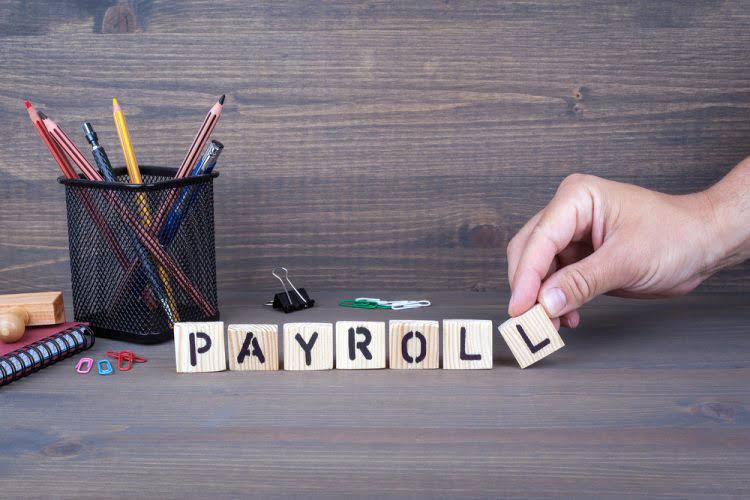
We took out a loan to pay for the remainder of the purchase price of the delivery van. The Liability is increasing (we owe more now than we did before we bought the van.) To increase a Liability we Credit it. When we track the changes in the Accounting Equation, we use the three basic accounts (Assets, Liabilities, and Equity).
The Accounting Equation
(Purchases of equipment or supplies are not recorded in the purchases account.) This account reports the gross amount of purchases of merchandise. Net purchases is the amount of purchases minus purchases returns, purchases allowances, and purchases discounts. The 500 year-old accounting system where every transaction is recorded into at least two accounts. You should consider our materials to be an introduction to selected accounting and bookkeeping topics (with complexities likely omitted).
Income Statement Accounts are Temporary Accounts
In this article, we explored the definition of https://sadallalaser.com.br/cash-disbursement-journal-in-quickbooks-definition/ normal balance and its significance in accounting. We discussed examples of normal balances for different types of accounts, including assets, liabilities, equity, revenues, and expenses. Understanding the relationship between normal balances and the categories of assets, liabilities, and equity is crucial for maintaining balance in the accounting system.
- Entities should also aim to refill their fund balances in one to three years.
- On the other hand, liability accounts like Accounts Payable and Notes Payable have a credit normal balance.
- This list is referred to as the company’s chart of accounts.
- If the normal balance of an account is debit, we shall record any increase in that account on the debit side and any decrease on the credit side.
What is the significance of understanding the normal balance of accounts?
Liabilities also include amounts received in advance for a future sale or for a future service to be performed. A current asset representing the cost of supplies on hand at a point in time. The account is usually listed on the balance sheet after the Inventory account. As a result these items are not reported among the assets appearing on the balance sheet. As a result of collecting $1,000 from one of its customers, Debris Disposal’s Cash balance increases and its Accounts Receivable balance decreases.
Linking Normal Balances with Cash Flow Management

The key to understanding how accounting works is to understand the concept of Normal Balances. Chartered accountant Michael Brown is the founder and CEO of Double Entry Bookkeeping. He has worked as an accountant and consultant for more than 25 years and has built financial models for all types of industries. He has been the CFO or controller of both small and medium sized companies and has run small businesses of his own. He has been a manager and an auditor with Deloitte, a big 4 accountancy firm, and holds a degree from Loughborough University.
Under the accrual basis of accounting the account Supplies Expense reports the amount of supplies that were used during the time interval indicated in the heading of the income statement. Supplies that are on hand (unused) at the balance sheet date are reported in the current asset account Supplies or Supplies on Hand. Under the accrual basis of accounting, the Interest Revenues account reports the interest earned by a company during the time period indicated in the heading of the income statement. Interest Revenues account includes interest earned whether or not the interest was received or billed.


Debit simply means on the left side of the equation, whereas credit means on the right-hand adjusting entries side of the equation as summarized in the table below. The Asset is increasing (we are adding the Asset to our accounts). Each account type (Assets, Liabilities, Equity, Revenue, Expenses) is assigned a Normal Balance based on where it falls in the Accounting Equation. Essentially, Accounting is all about tracking the changes to the Owner’s Equity.
- Cash on hand should never have a net credit balance, since one cannot credit (pay from) cash what has not been debited (paid in).
- The contra account is an account that is usually the opposite of one of the other accounts.
- In conclusion, you’ve seen how crucial understanding the normal balance of accounts is.
- If the employee was part of the manufacturing process, the salary would end up being part of the cost of the products that were manufactured.
If our florist shop owner decides to take some of their invested funds back out of the business (called Owner’s Draw or Owner’s Withdrawal or Dividends), equity decreases. Every dollar spent to make revenue (buying flowers, paying employees, paying rent, paying insurance), reduces equity. When our florist decided to start their business, they put their own money into the business.

What Constitutes a Normal Balance for Different Accounts
Equity is zero because for every dollar of assets we have, we have a dollar of liability. It’s the same as the bank giving you a 100% mortgage (liability) for a house purchase. You have no equity in the house, the bank essentially owns all of it until you start to make payments. One of the main financial statements is the balance sheet (also known as the statement of financial position). With its intuitive the normal balance of an account is the interface and powerful functionality, Try using Brixx to stay on top of your finances and manage your growth. Liabilities often have the word “payable” in the account title.
Conversely, if you’re paying a supplier, you’d increase your accounts payable, also a credit balance account, by crediting it. When you debit an account, you’re either increasing an asset or expense account, or decreasing a liability or equity account. It’s crucial to understand that in accounting, ‘debit’ and ‘credit’ don’t necessarily mean ‘subtract’ and ‘add’ as they’re often used to record transactions in the right accounts. Normalizing entries are typically made at the end of an accounting period to ensure that the financial statements accurately represent the business’s ongoing operations. These adjustments help remove distortions caused by extraordinary or non-recurring events, allowing for a more meaningful analysis of the business’s financial performance and trends.
